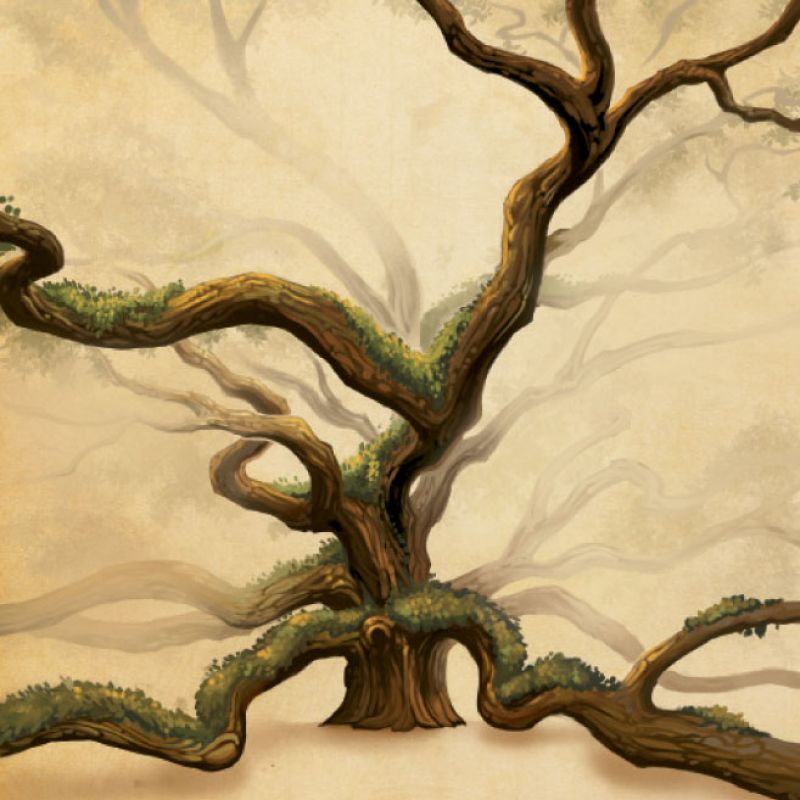
Gentle Giant This massive oak has a trunk circumference of some 28 feet. That means that if it were possible to magically transport the tree to the intersection of Charleston’s Broad and Meeting streets (the Four Corners of Law), its trunk would take up most of the intersection.
Angelic History While the oak’s spreading limbs are thought to resemble the wings of an angel, its name actually comes from the Angel family who owned the land on which it stands. In 1717, the property was granted to colonist Abraham Waight, whose daughter, Martha, married Justus Angel in 1810; their descendants owned it until the mid-1900s. The Angel Oak site was purchased by the city of Charleston in 1991.
Ageless Wonder One reason for the Angel Oak’s longevity is its natural hardiness. Live oaks have a deep taproot (the largest root, from which other roots sprout) and widespread root system that anchors them solidly into the ground, making them extremely resistant to winds and floods.
Heavenly Host Like other live oaks, the Angel Oak provides a home for countless bugs, reptiles, and mammals, with its dense canopy offering a safe nesting space for numerous songbirds as well as owls, woodpeckers, and hawks.
Resurrected Beauty Many plants dwell amidst the tree’s spreading branches, most notably the resurrection fern. Like Spanish moss, it is an epiphyte, or air plant, and lives symbiotically atop the surface of the branches without harm to the oak. The fern’s name comes from its ability to survive long periods of drought (some estimate as long as 100 years) and come back to life with even a small amount of rain.
Welcoming to all In a 1980 interview, local civil rights activist Septima P. Clark described picnicking around the Angel Oak from 1916 until 1929, when she was a teacher on John’s Island. She noted that even when ”segregation was at its height,” the tree’s grounds were open to everyone. African-American families visited often, bringing their children to play among the limbs.In a 1980 interview, local civil rights activist Septima P. Clark described picnicking around the Angel Oak from 1916 until 1929, when she was a teacher on John’s Island. She noted that even when ”segregation was at its height,” the tree’s grounds were open to everyone. African-American families visited often, bringing their children to play among the limbs.
Made in the Shade The tree’s canopy provides a shade area of 17,000 square feet. Many of its limbs are the size of normal tree trunks and so heavy they rest on the ground—the longest stretches almost 90 feet in length.
Visit Angel Oak Park: It’s open daily, 9 a.m.-5 p.m. at 3688 Angel Oak Rd., John’s Island. No charge for admission. Call (843) 559-3496 or visit www.charlestonparksconservancy.org for more info.
Photographer Dustin K. Ryan's video, "Angel Oak Tree of Life," takes you on a journey through the tree’s sprawling branches:
Angel Oak Tree of Life from DKR on Vimeo.